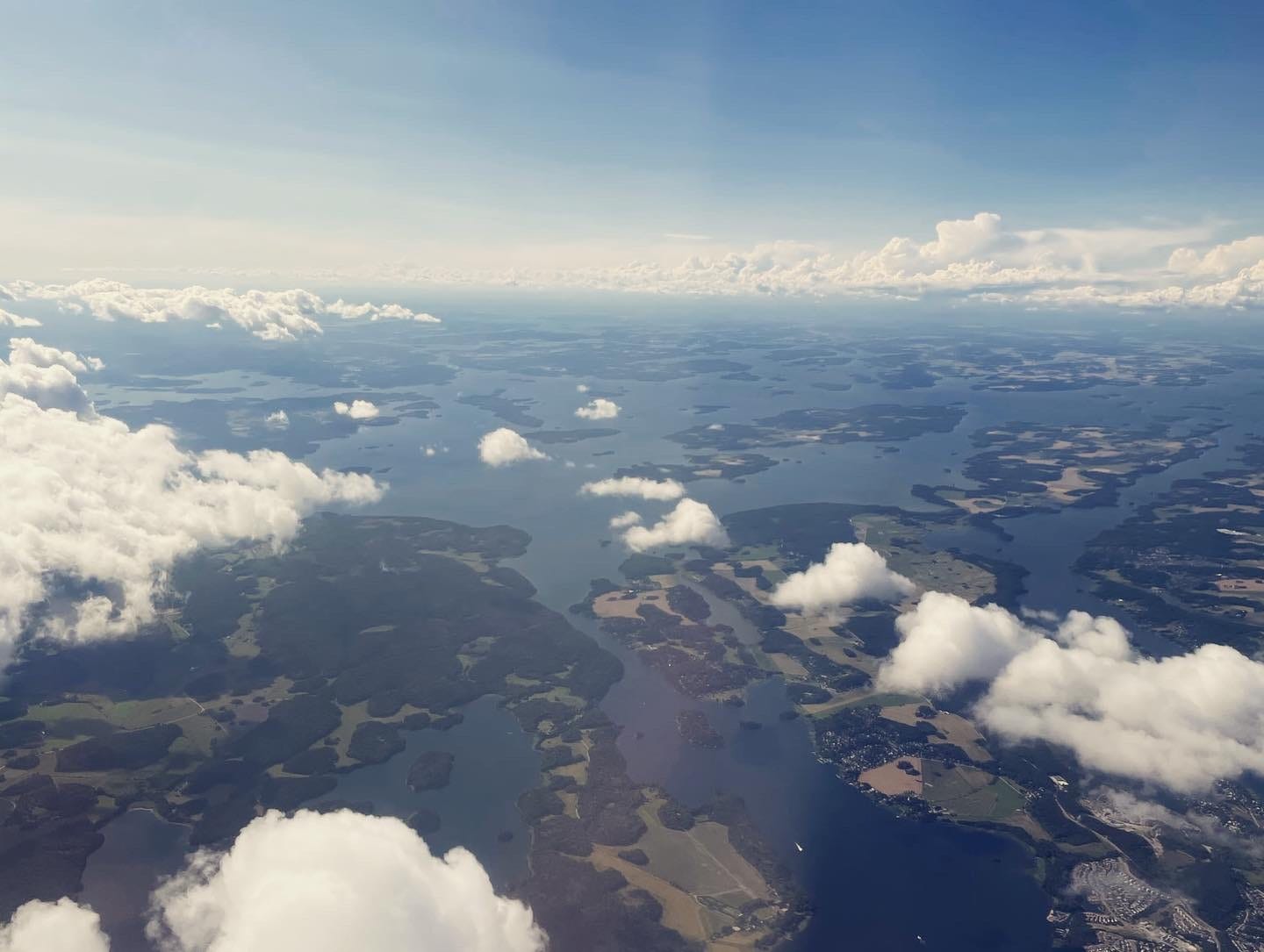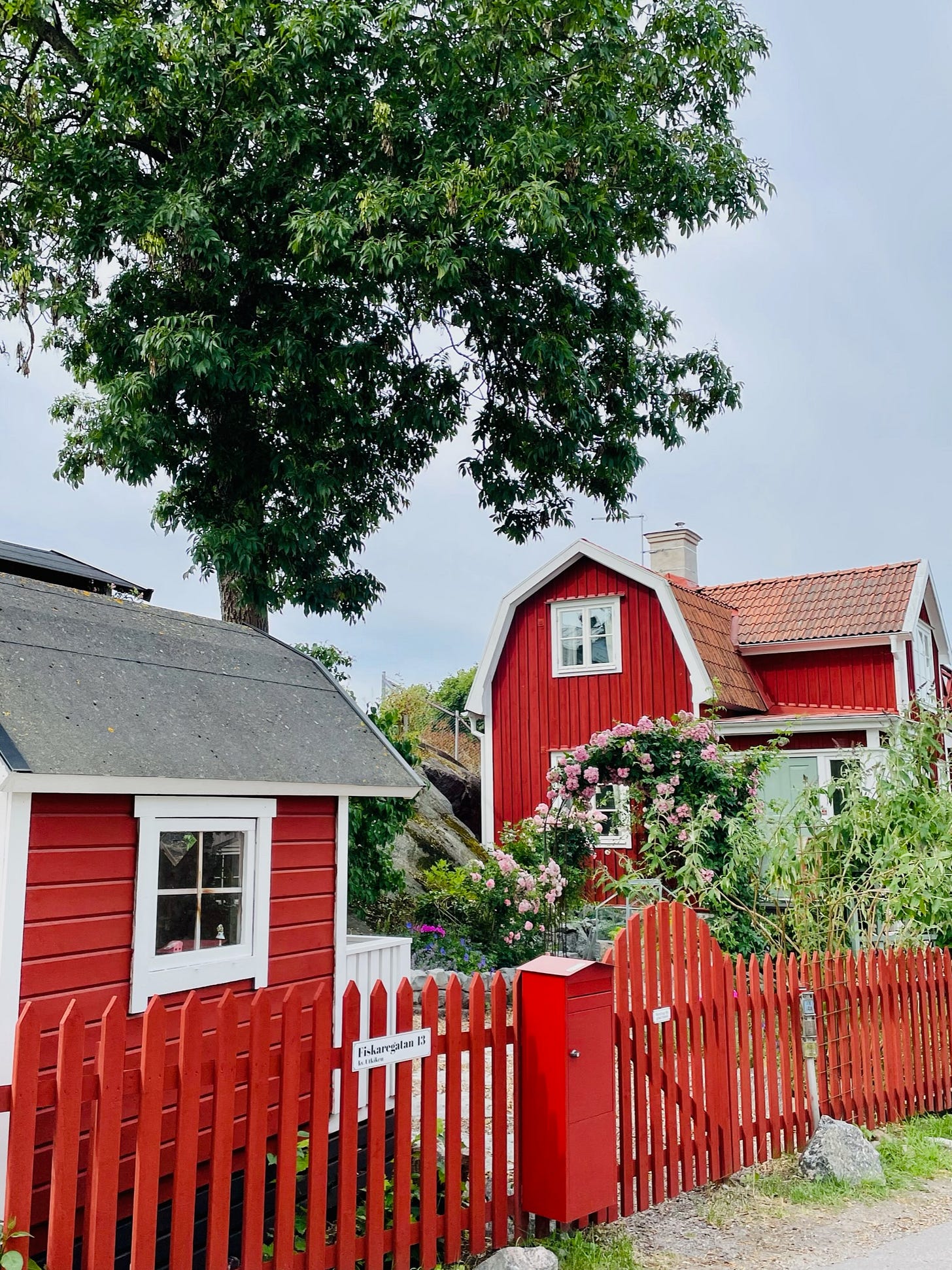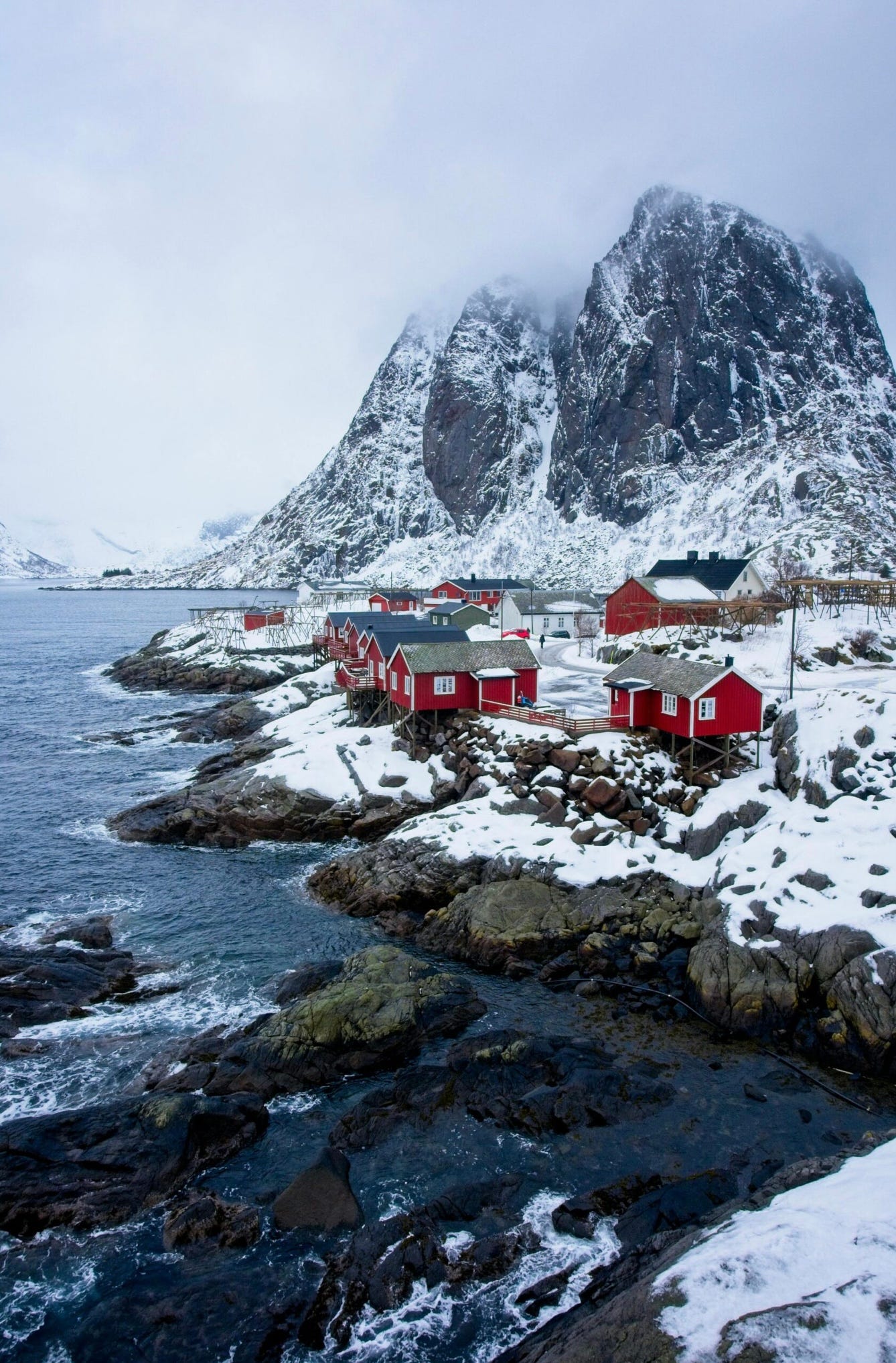The Green Travel Guide #003: Nordic Shores & Sustainable Stories from Scandinavia
Mindful Travel for a Meaningful World
“There is an archipelago in my heart.”
— Swedish poet Tomas Tranströmer
This edition drifts through Sweden’s sea‑sprinkled islands and heads west to Norway’s fjords—where slow, regenerative travel meets Nordic serenity.
Archipelago Days: A Swedish Summer
Embracing Slow Swedish Summers with Island Cabin Living
It was Finnish author Tove Jansson’s classic, The Summer Book, that first introduced me to Scandinavian summers and archipelagos strewn confetti-like with tiny islands, those in turn dotted with brightly painted wooden cabins. The all-too-brief passing of the northern summer months, the sense of urgency to seize every moment of sunshine and dappled light, before “it is still summer, but the summer is no longer alive.”
I had travelled to Sweden many times – and even spent a couple of years learning Swedish. My Pinterest feed was full of brightly painted cabins perched on rocky islets. It was time to take the plunge.
One of the loveliest things about slow travel around the islands is that they are some of the most serene destinations in Scandinavia, offering a perfect summer retreat for those seeking a deeper connection to nature.
Imagine staying in a quaint wooden island cabin (stuga) with its rickety jetty jutting out in the water, surrounded by pristine landscapes and tranquil waters. An eco-stay on one of Sweden’s islands is not just a holiday—it’s an invitation to embrace slow travel. Getting there will inevitably take a little time – there are boats to catch, routes to map. Once you arrive you will want to explore, and really get to discover the island. It’s about embracing a much more intentional and mindful approach to journeying. Time slows down – even more so if you can find an island with patchy internet connection, and a cabin owner resistant to TVs and technology. Think board games, sea swimming, saunas and ice-plunge, grilling supper outdoors while swiping away mosquitos (nowhere, not even Sweden can be 100% perfect).
For Swedish friends, summer is a much anticipated time of year with family gatherings and long, light-filled days spent bobbing about on the water, or hiking in the woods, eating räksmörgås (a typical open shrimp sandwich on rye, with dill and cucumber, liberally doused in lemon juice and mayo) in rocky coves.
Whether you’re looking for a rustic escape or a quiet weekend of reflection, a typical Falu Red (faluröd) island cabin provides the ultimate cosy eco-friendly getaway. Tempted?
Here is just a small sample of the Swedish islands, how to get to them, and what to do when you’re there. Prepare to disconnect from the endless rush of everyday life and experience an authentic, slow-paced Pippi Longstocking type adventure of your very own.
Read the rest and get the island summer travel itinerary -> GreenTravelGuides.World
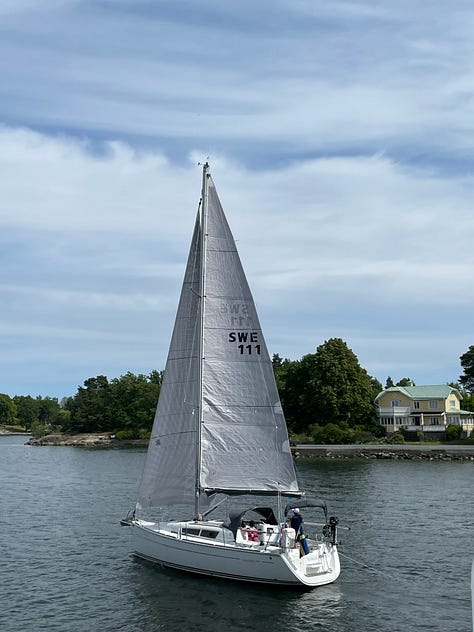
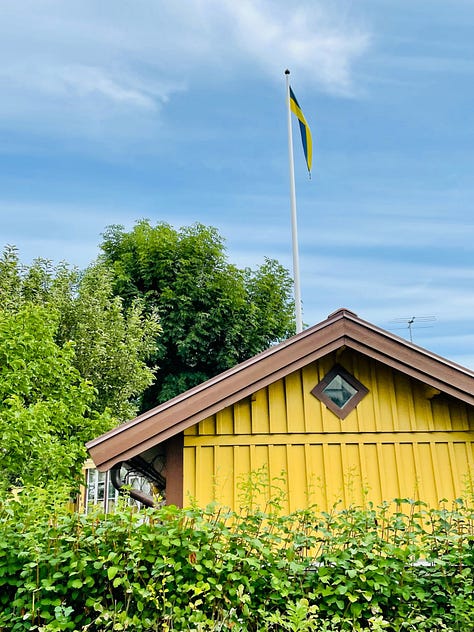
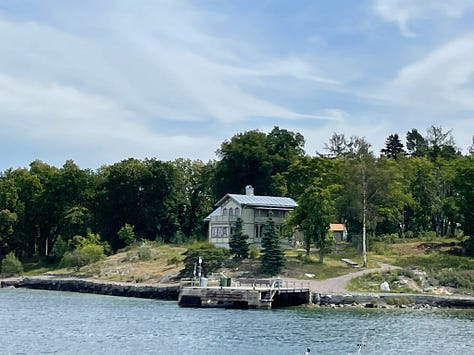
Practical Advice: Exploring Sweden’s Islands Sustainably
- Use public ferries to minimise your carbon footprint: the ferry system is fantastic and it’s easy to get between most of the islands in the summer months
- Stay in eco-hostels or cabins powered by solar
- Support local producers
- Hiking responsibly: stick to marked trails and leave no trace
Featured Green Travel Destination Guide: Norway
Nature, Nordic-Style — Norway’s Green Heart
Fjord Trails: Eco-certified paths in Geirangerfjord & Nærøyfjord
Regenerative Lodging: Think Juvet Landscape Hotel and small farm stays in Telemark
Slow Trips: E-bike along the Atlantic Road; paddle through Lofoten’s clear fjords
Taste Local: Foraged berries, smoked trout, and Sámi coffee
➡️ Dive deeper in the [Norway Green Travel Guide on GreenTravelGuides.world].
🧳 Community Highlight
The Art of Staying Longer: How Slow Travel Transforms Your Experience
We talk about slow travel a lot, but in reality most trips are fraught with a race to the airport, long queues, check-in stress, flights that we feel guilty taking - but there’s only a week, a long weekend…
And there’s so much of the world to see. We have a bucket list to work through and not enough time. When we arrive we have a long itinerary of all the must-see spots a guidebook tells us we can’t possibly miss out on.
How about we just stop. Why not rethink how we travel completely.
After all, what is the point of travel? What a luxury it is, how lucky we are those of us that can travel, that have the right passport, that can afford to book the flight/hotel/restaurants. So, given all that, why not do it in the most meaningful way possible.
Slow travel offers us the chance to connect, to reflect, and to immerse in the places we visit. Slow travel and staying somewhere longer isn’t just about taking your time; it’s about transforming how you experience the world around you.
Slow travel is a mindset. It starts in the planning. It’s how we show up and move through the world with intention. Do we really want to try to understand a place, its people, or are we happy just to grab a series of selfies with epic backdrops for the ‘gram?
When we focus on immersive experiences (try staying somewhere longer and taking a language/cookery/art course for example), make local connections (find a local tour guide to show you their city, or do a culinary walking tour, or a historical route led by someone with in-depth local knowledge) and choose sustainable stays, then the experience is completely different. Why not ditch the airport entirely if we can and opt for slower, more sustainable transport options.
Often we race to clock up countries visited - I’m as guilty of this as anyone else but we can slow down. Do less, and do it better.
As someone who has lived in different countries, I know first-hand how a longer stay will change the way you engage with your surroundings. Here’s how:
By staying longer you move past the tick list of must-see spots. You start to notice details around you. Underneath the tourist façade you start to engage in real life - whether through sharing meals with local families, going to nighttime concerts in a park, joining in a neighbourhood festival, or finding your local café and becoming a familiar face there each day.
Some of my favourite travel memories have been like this: a wonderful lawyer-turned-historical-tour-guide full of energy and knowledge and love for his home country Greece taking us to see incredible sites but stopping off at local beaches - not a tourist in sight - and eating at local restaurants - sharing deep conversations generously, teaching us Greek with immense patience and love. Or staying with a family in the Pamirs, sharing stories and cultures, learning what everyday life was like for them, spending time eating, singing, playing music together - just joy-filled moments. Or unexpectedly finding a park lit up with twinkling lights and joining the crowd for an evening of incredible singing and music in the heart of Lisbon as night fell. None of these were must-do moments, but they were rich, layered and linger long in the memory.
Language exchanges can be a fantastic way to connect to a culture, or try Workaway or Meet up. Find local hiking groups. Join a walking food tour in a new city. Or simply talk to your neighbours. When you’re somewhere for a longer stay others are more likely to share time with you. A smile can go a long way. A few words of the local language even further.
And then there’s the environmental impact.
Fewer flights means less fuel consumption, and lower-impact travel. Staying longer means you can support local economies in a more sustained way. Cut your carbon trail and the environmental costs of constant travel.
For example, if travelling in Europe, why not take the train. It’s greener and the slower pace lets you soak in the landscapes along the way. It’s a beautiful way to really see more of the countries you visit. Other sensible slow travel tips are to book with eco-friendly accommodations along the way, shop at local markets, and choose public transportation over rental cars whenever possible.
If you’re staying longer, you’re less likely to plan quite so much. You have time to wander without an agenda, stumble upon unexpected places, and follow your curiosity wherever it leads…
To read the rest and see slow travel tips ➡️ [Visit Community - www.GREENTRAVELGUIDES.world]
📚 Bookshelf Pick
Tove Jansson — The Summer Book
A beloved Nordic classic. A little girl and her grandmother share a summer on a tiny Finnish island—brimming with light, storms, mischief and profound reflection. A perfect companion for Scandinavian island escapes.
✨ Coming soon…
Pre-order: The Ultimate Green Travel Guide: 100 Inspiring Adventures
For conscious explorers, discover 100 inspiring slow journeys from across 7 continents. Packed with green travel insights and sustainable stay suggestions, it’s your passport to regenerative travel. Whether you're dreaming of your first eco-adventure or looking to deepen your commitment to responsible travel, this guide offers inspiration, tools, and actionable tips to help you become the kind of traveler the world needs now.
📖 Pre-order here ➡️ https://shorturl.at/jmKhA
Coming soon (paid edition):
Interviews with Nordic conservationists
Deep dives into Denmark, the Arctic Circle & the Faroe Islands
Behind-the-scenes of writing The Ultimate Green Travel Guide
Thank you for journeying with me! Have a story or destination you think we should spotlight? DM anytime. For more green travel inspiration, visit:
Until next time—travel gently,
Laura
Laura McVeigh
Author | Travel Writer | Founder, Green Travel Guides
lauramcveigh.com | lauramcveightravel.com | travel-writing.com greentravelguides.world |
P.S. Why not explore Write Your Way Around The World—my newsletter for aspiring travel writers, and Travel-Writing.Com - full of free resources for writers seeking to build a location-independent career they love.




